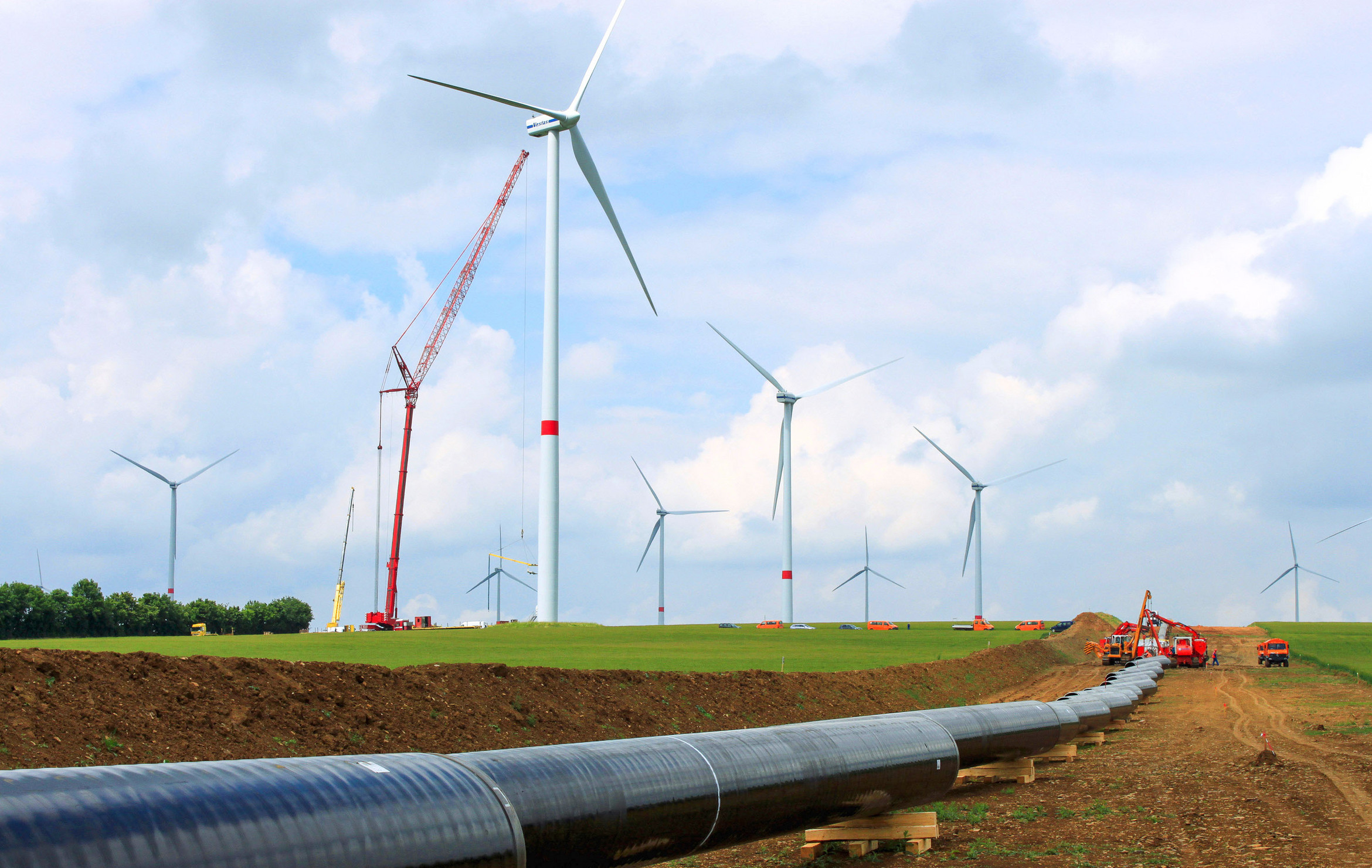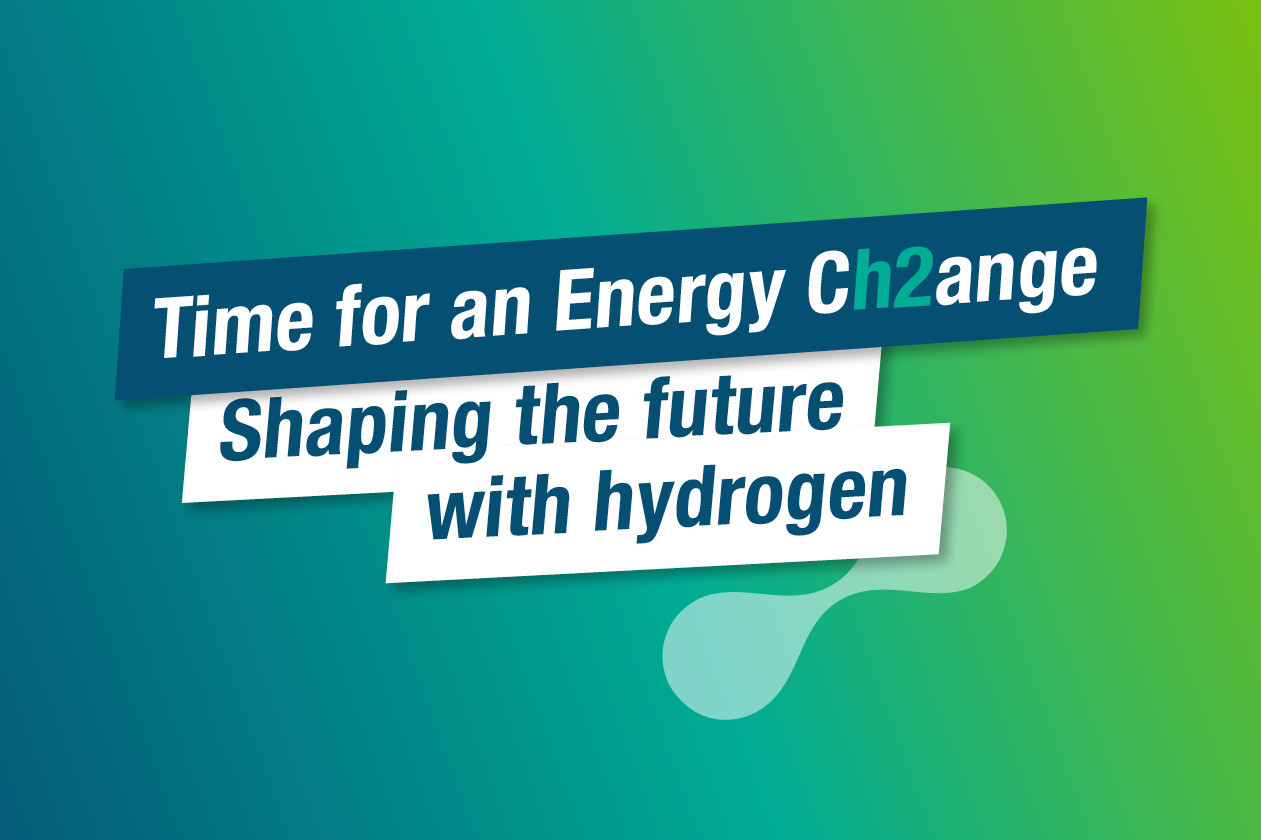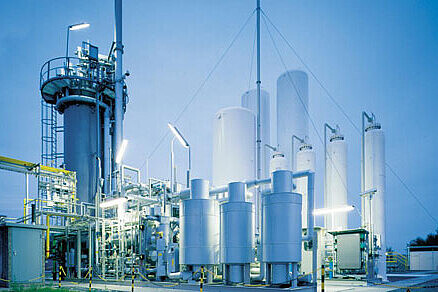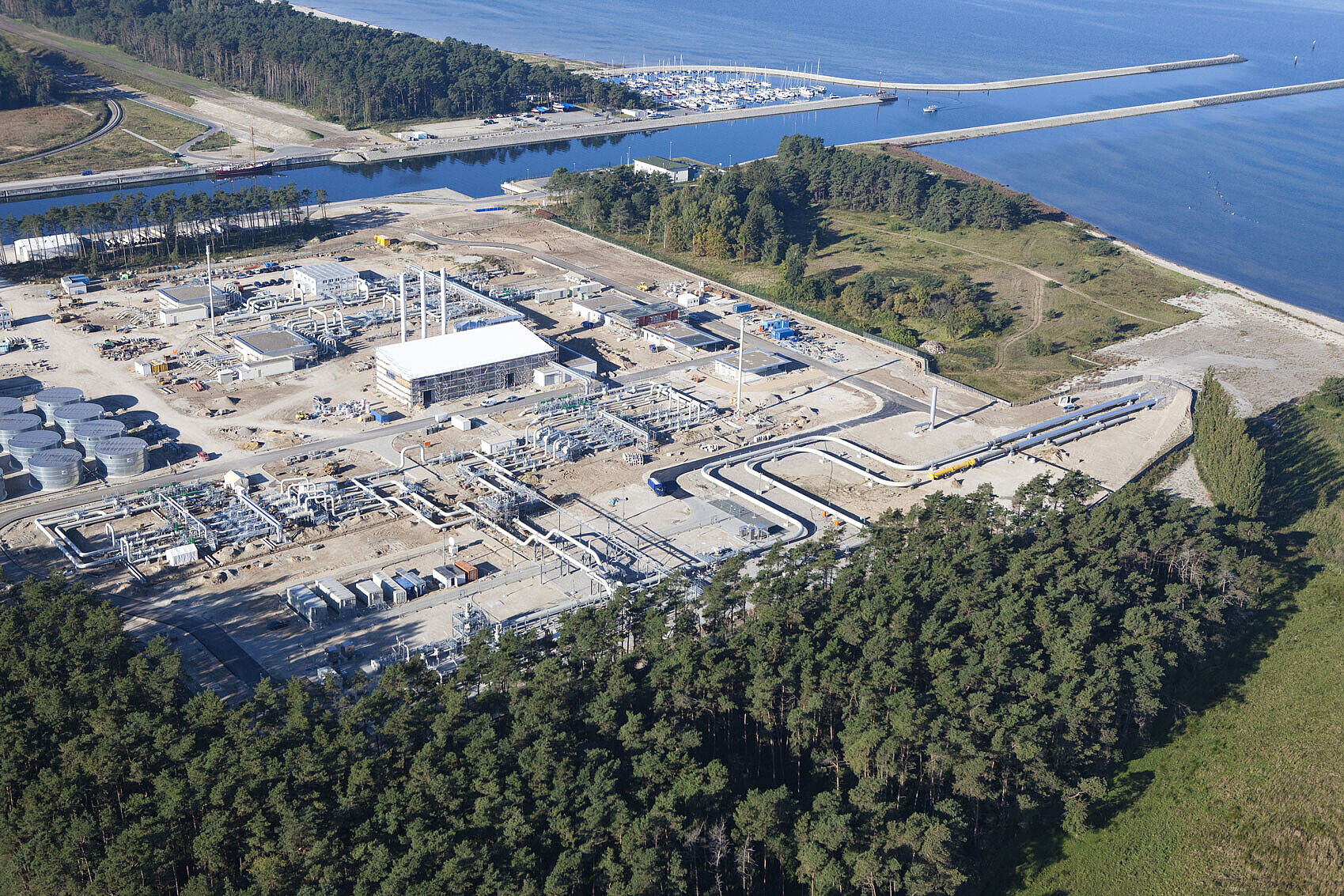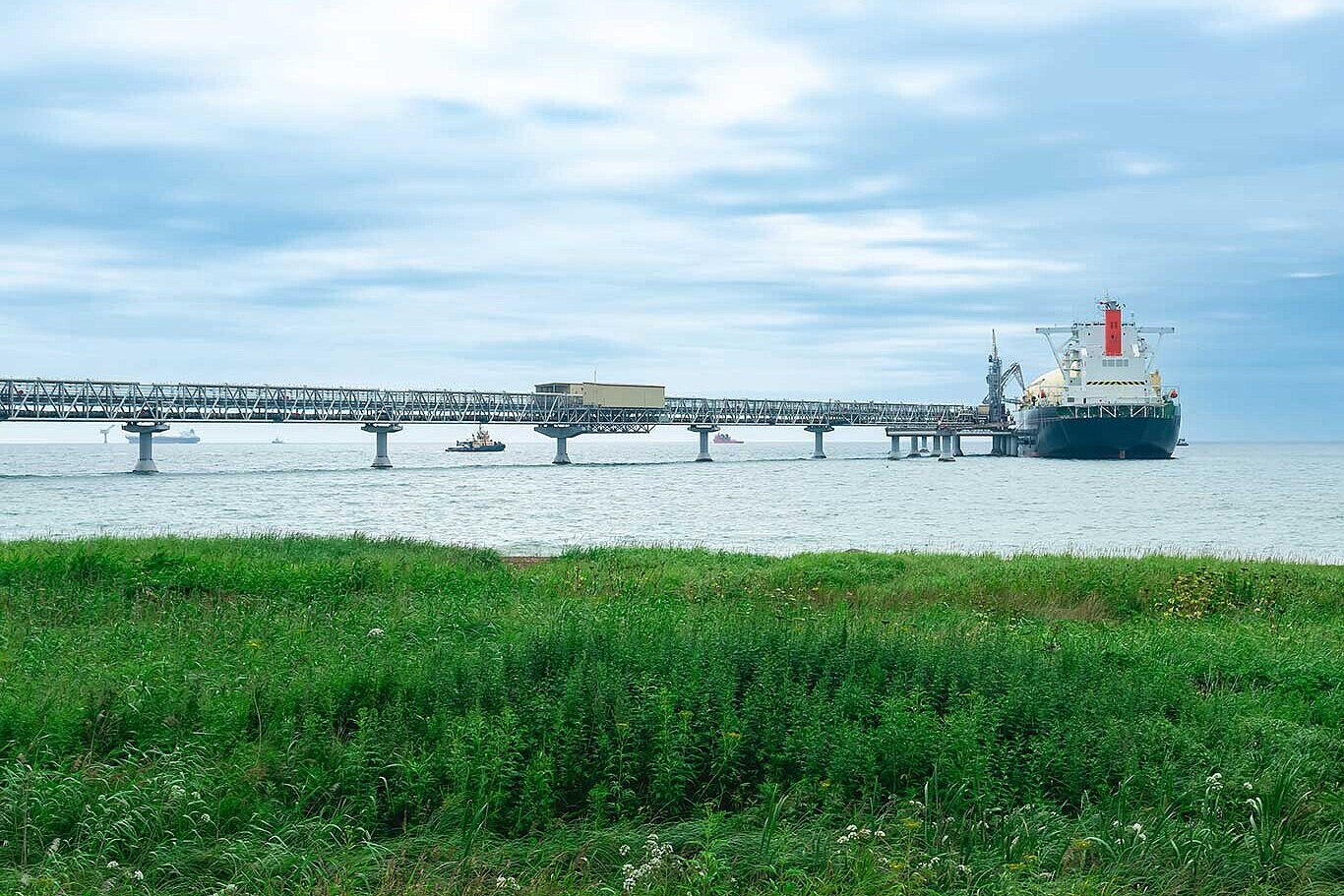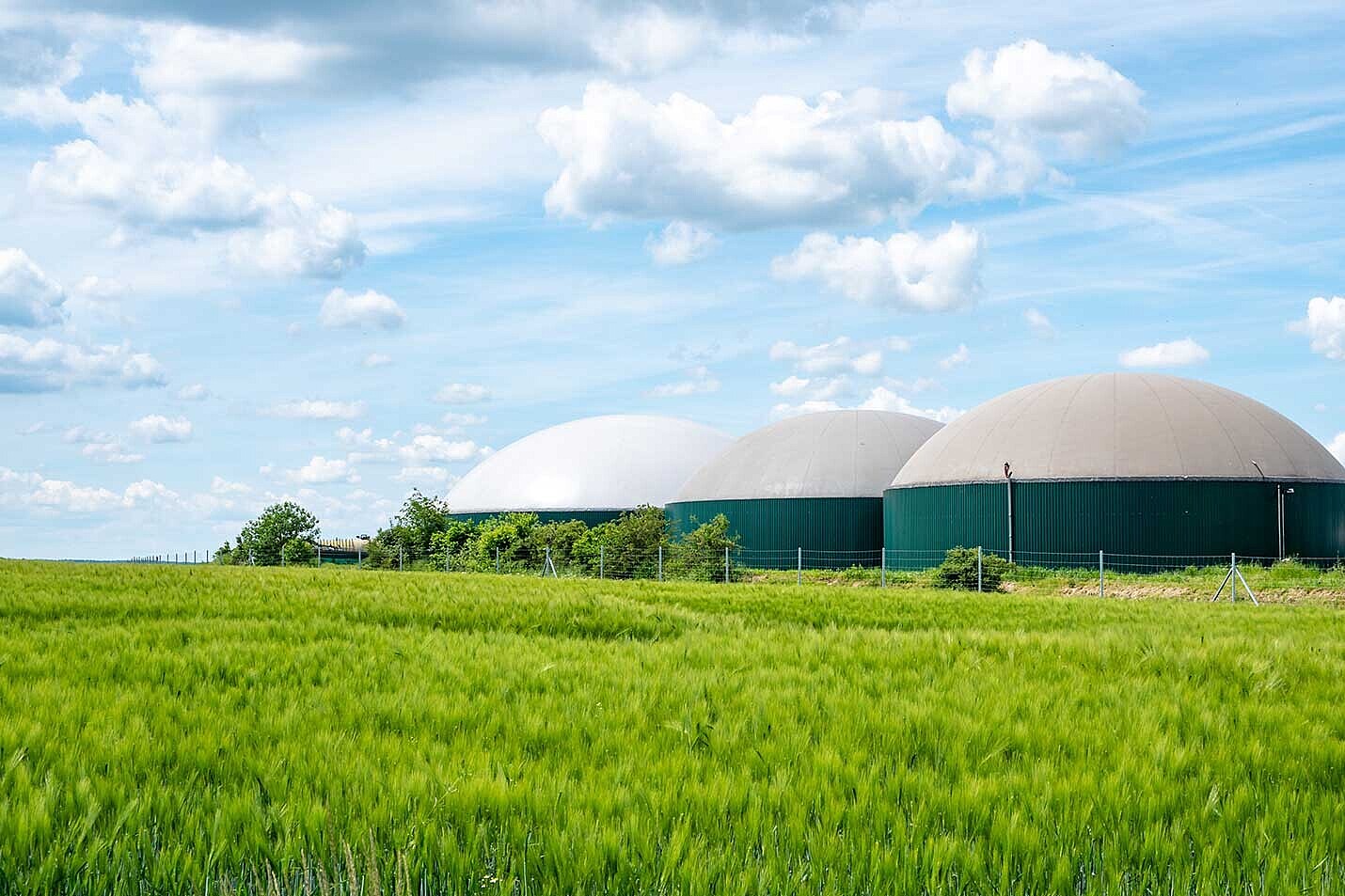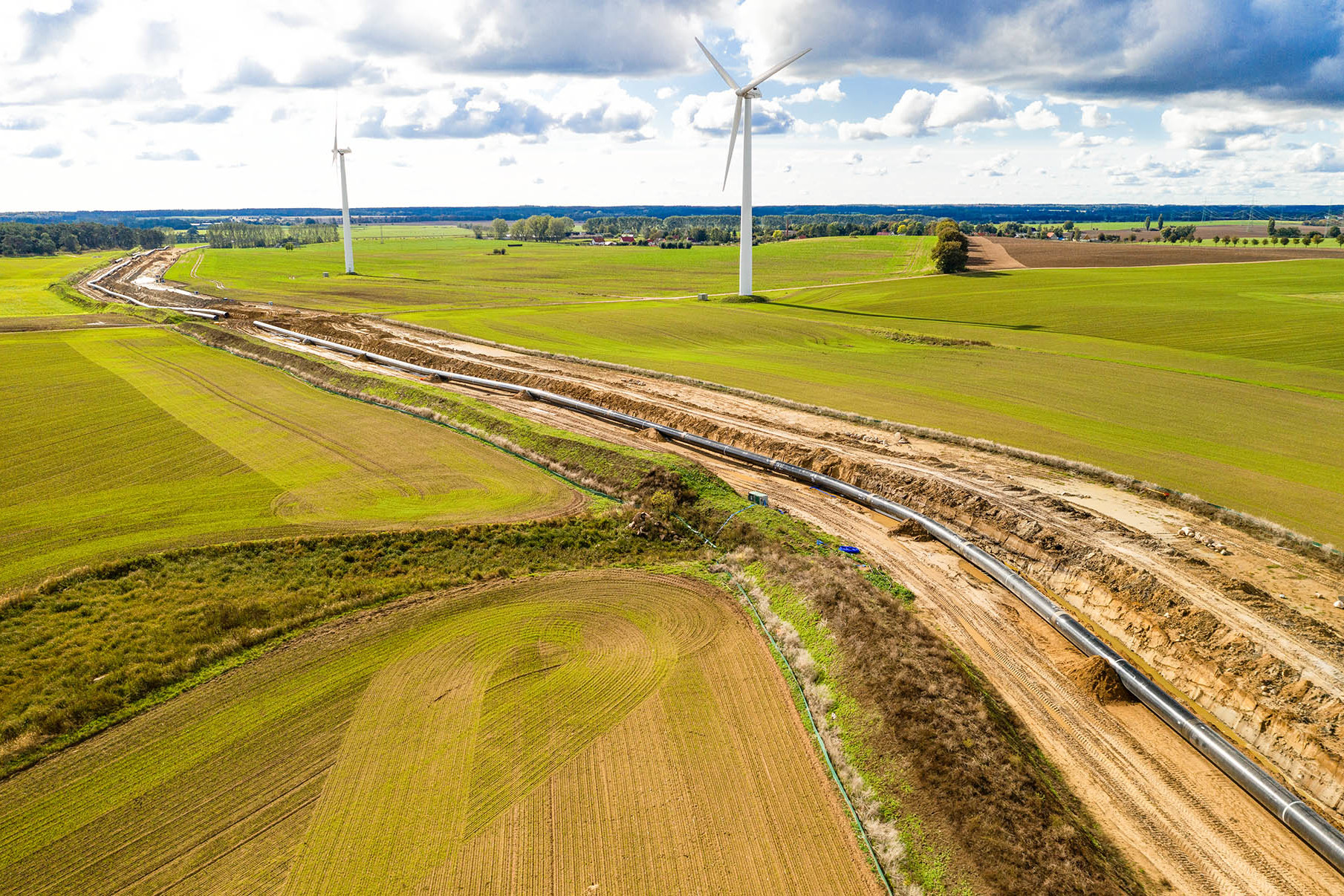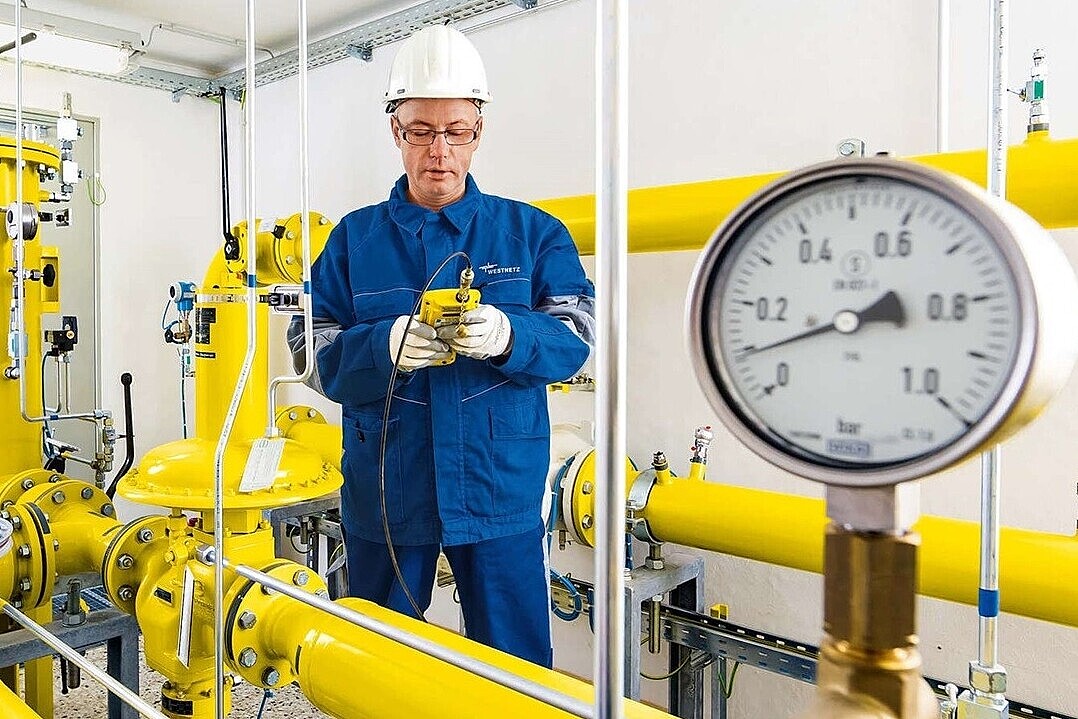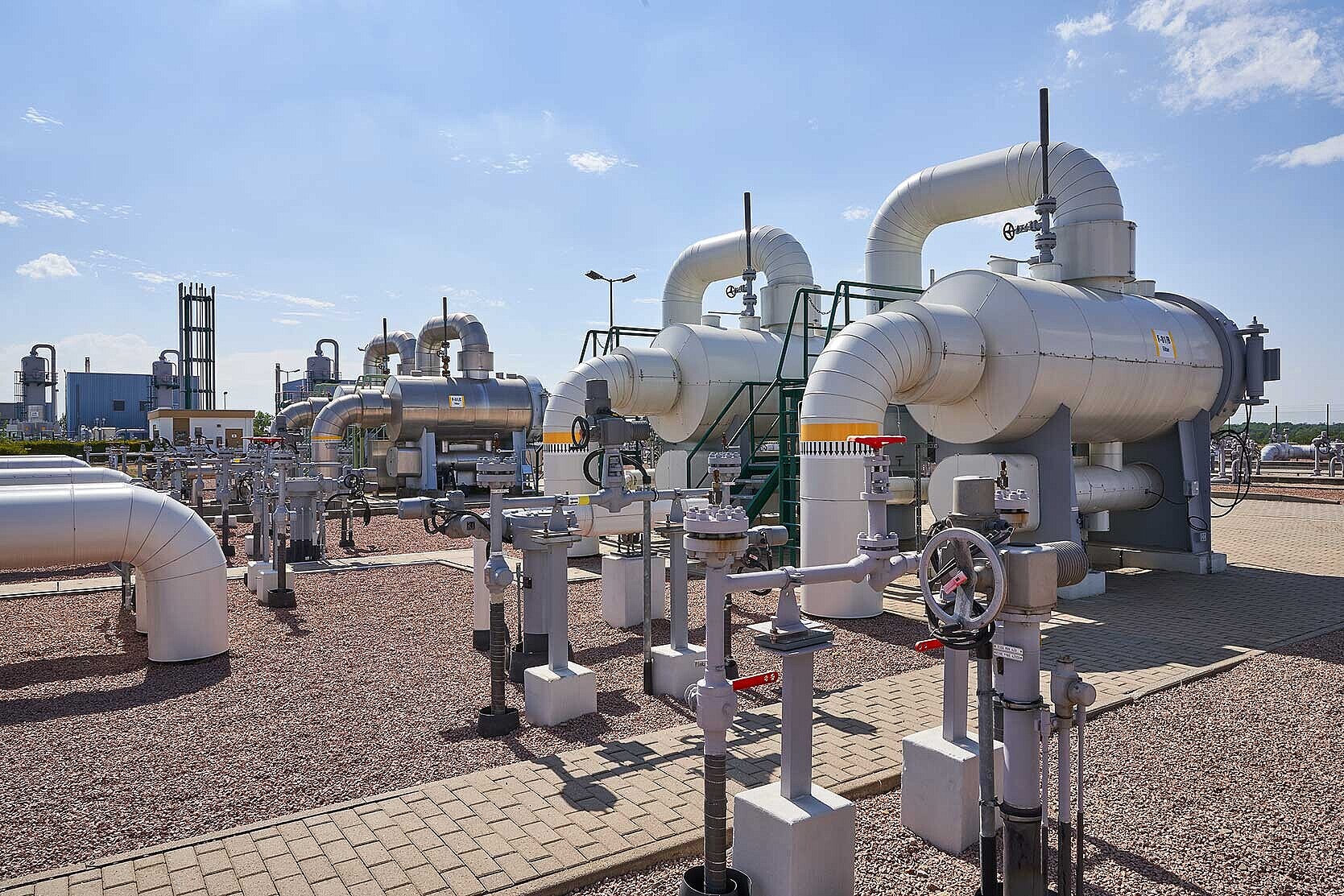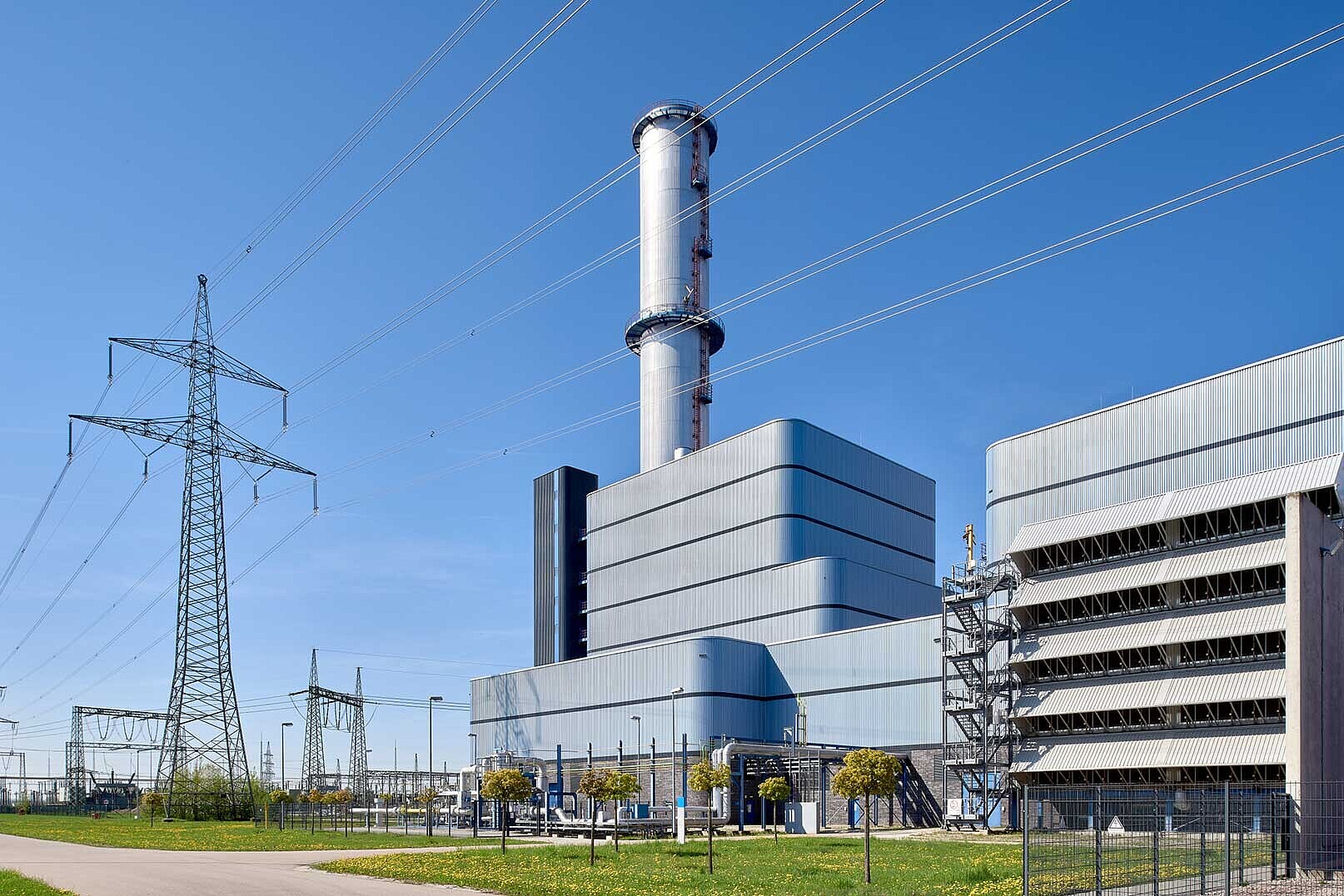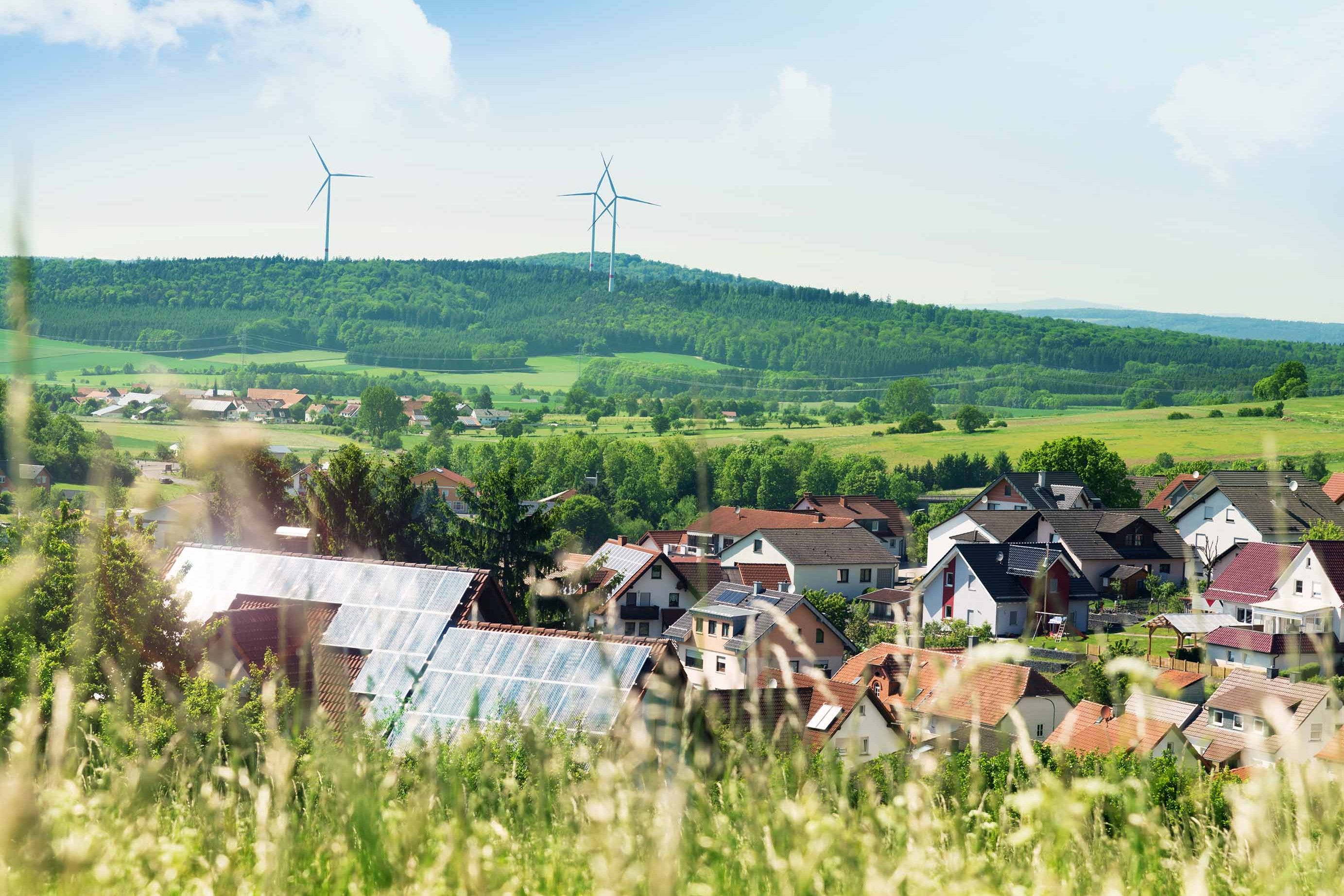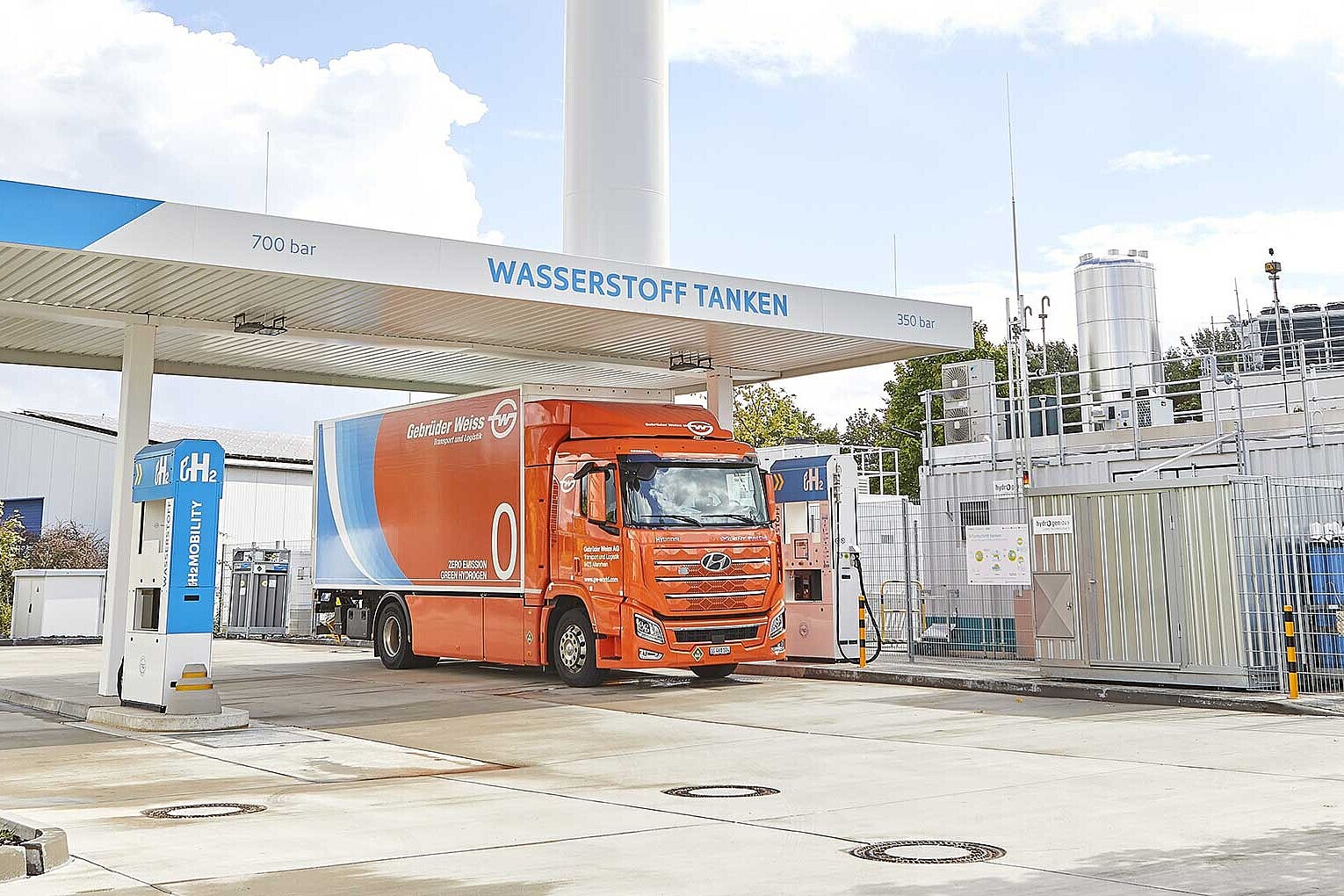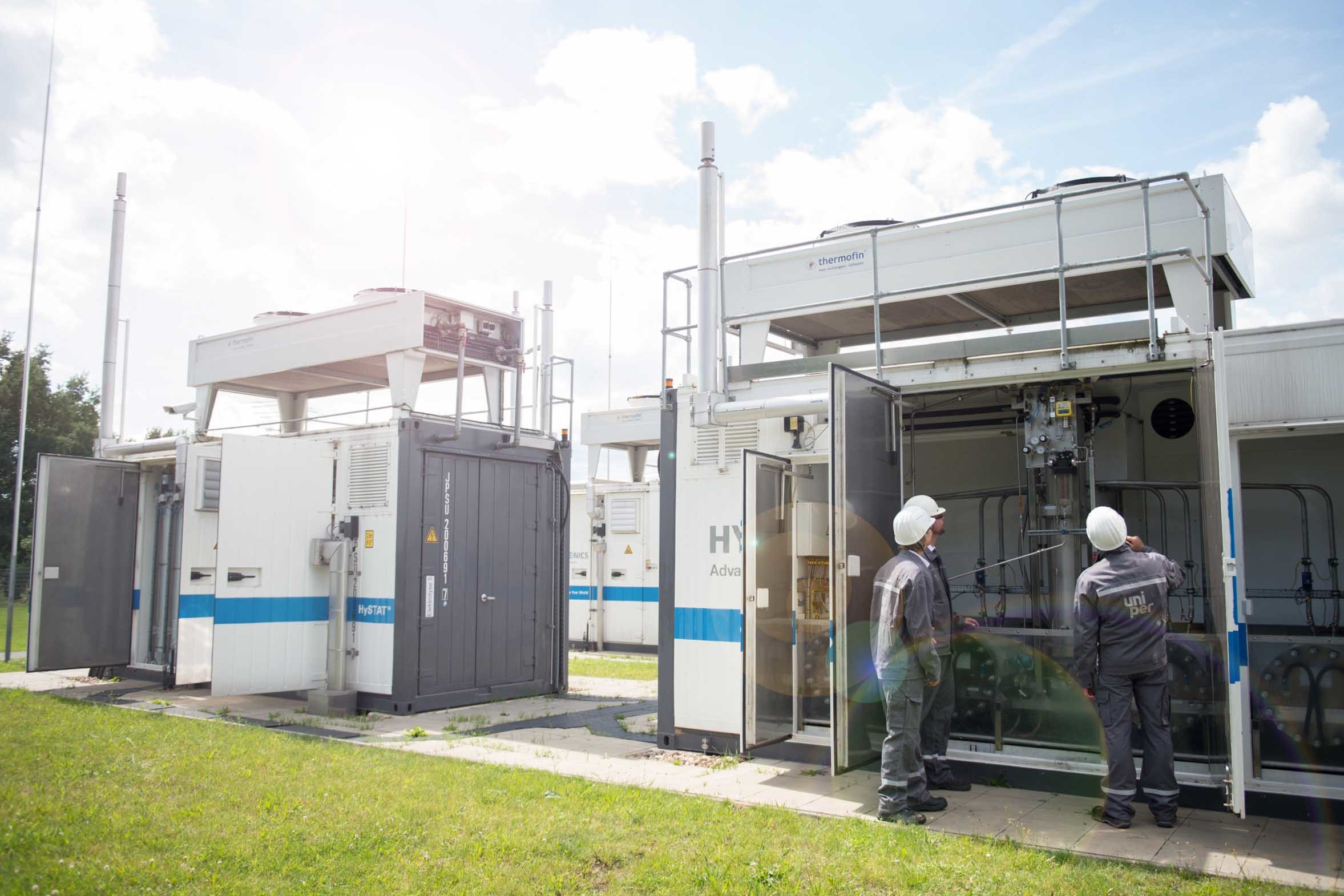
Green hydrogen is a climate-neutral energy source and a crucial component of the energy transition. To produce it, you need renewable electricity and water, which is broken down into its elemental components, oxygen (O2) and hydrogen (H2), by means of electrolysis. This process is also called power-to-gas. Photovoltaic systems and wind farms on land (onshore) or at sea (offshore) can be used as power sources.
Hydrogen can thus be produced wherever water and renewable electricity are available. Wind and solar energy, which are highly dependent on the weather and are not continuously available, can be stored in the gas grid in the long term and used as needed. Fluctuations or overloads in the electricity grid, for example in windy or sunny periods, can thus be effectively compensated for. The power-to-gas process makes it possible to decouple the production and use of renewable energies in terms of location and time. The production of hydrogen using electrolysis ensures that every kilowatt hour of green electricity can actually be used and that renewable energy plants do not have to be shut down when the electricity supply exceeds demand.
Here you will find the respective core regulations. The complete set of rules can be found at https://www.dvgw-regelwerk.de/en
There are no events available
There are no committees
